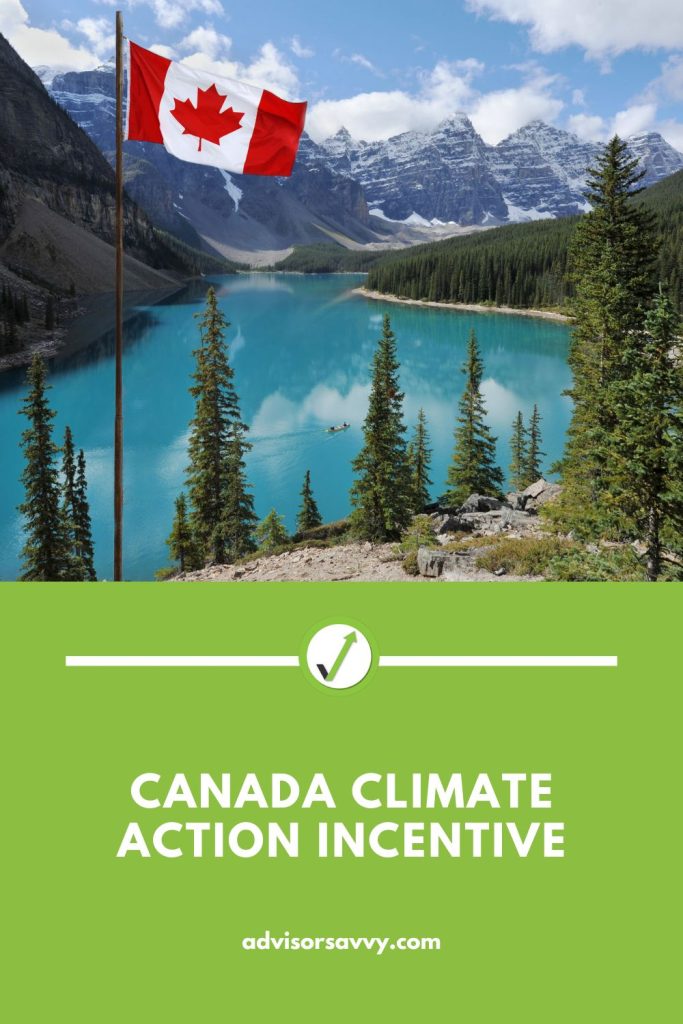
Climate change is one of the greatest challenges facing our planet and civilization today. With rising global temperatures and increasing levels of greenhouse gases changing the climate at an alarming rate, reversing global warming is at the forefront of Canadian’s minds. To combat this crisis, the Canadian government has introduced the Canada climate action incentive program as a way to encourage both individuals and businesses to reduce their emissions.
Under this program, eligible participants can receive payments for taking actions such as installing energy-efficient appliances, switching to alternative energy sources like wind or solar power, or using public transportation whenever possible. Read on to learn more about the Canada climate action incentive and how you can take advantage of this important initiative.

Table of contents
What is Climate Action Incentive?
The climate action incentive program, or CAIP/CAI for short, is a government-issued, tax-free amount that goes towards offsetting the cost of federal pollution pricing for individuals and families. This applies to residents in Alberta, Saskatchewan, Manitoba and Ontario specifically. As of July 2023, the Canadian government extended the benefit to residents of Newfoundland and Labrador, Nova Scotia, New Brunswick and Prince Edward Island.
The CAI comes in two parts: a basic amount and then an extra supplement for people living in rural or small communities. The Canada climate action incentive is in place to motivate Canadians to do their part in reversing global climate change.
As of July 2022, the Canadian government will start issuing tax-free quarterly payments through the benefits system instead of an annual refundable credit claimed on personal income tax returns.
Related Reading: What is the Home Buyers’ Plan?
CIBC Investor’s Line Offer
Up to $6.95 per online stock or ETF trade. Plus, there’s no minimum account balance.
What is Climate Action Incentive Payment Notice?
The climate action incentive payment notice is written correspondence from the Canada Revenue Agency regarding CAI payments. This payment is issued every three months, or every quarter, to households in provinces subject to the federal pollution pricing system. Thereby providing financial support for individuals and families who are feeling the impact of rising costs associated with environmental changes.
Climate Action Incentive Eligibility
To qualify for Canada climate action incentive deposits, you must have been a resident of Alberta, Saskatchewan, Manitoba, Ontario, Newfoundland and Labrador, Nova Scotia, New Brunswick, or Prince Edward Island on the first of the payment month and the last day of the previous month. In addition, you must also meet one of these other requirements during that same period:
- You are at least 19 years old;
- You have or had a spouse or common-law partner;
- You have been a parent who lived with your child.
The credit will only go to one spouse or common-law partner, decided by whose tax return was assessed first. The CRA clarified that, “No matter which one of you receives the credit, the [total] amount will be the same.”
You will receive a credit for every eligible child if you qualify for the Canada child benefit.
If you live in a small or rural community, you may be eligible for a 10% supplement. Check your eligibility and complete Schedule 14. Newcomers to Canada must fill out a form to apply for CAI.
Related Reading: Top 5 TFSA Mutual Funds in Canada
Does everyone get the climate action incentive payment?
No, not every Canadian receives the climate action incentive payment. It is generally understood that all eligible residents of Alberta, Saskatchewan, Manitoba, Ontario, Newfoundland and Labrador, New Brunswick, Nova Scotia and Prince Edward Island will receive the climate action incentive payment. Again, to be eligible for CAI deposits, individuals must be residing in one of these provinces on the first day of each monthly payment period, as well as throughout the 30-day period prior to that. Additionally, they must meet one of several criteria mentioned above.
Thus, it is safe to say that every individual who meets all these basic requirements and qualifies for this program can expect to receive the appropriate climate action incentive payment from the government.
Do you need to apply for the Canada climate action incentive?
No, you don’t need to apply for the Canada climate action incentive. The Canada Revenue Agency automatically assesses your enrollment into the program. However, you must file and submit your personal tax returns every year during tax season in order to be assessed and enrolled. In addition, only you or your spouse/common-law partner will receive the payment, not both of you.
How much is the climate action incentive payment?
The quarterly CAI payment is in addition to new proposed affordability measures meant to ease many Canadians’ financial burden indirectly related to climate change. These planned concrete actions against inflation and rising costs of living would include doubling the GST/HST tax credit for six months.
Therefore, single Canadians without children would gain an extra $234 per year, couples with two kids could get up to $467 more annually, and seniors would receive an average of $225 more each year.
In addition, children under 12 will get annual payments of up to $1,300 over the next two years through a Canada Dental Benefit. A family of four will receive the following over the course of the 2022–2023 fiscal year: $745 in Ontario, $832 in Manitoba, $1,101 in Saskatchewan and $1,079 in Alberta. Lastly, nearly two million low-income renters who are finding housing unaffordable will receive $500 this year as part of plan.
Canadians are feeling the pressure of higher costs of living, and the CAI payment will help to ease this burden. The Canada climate action incentive payments will be sent out on a quarterly basis, providing households with much-needed relief. This initiative will also help fight climate change, making it a win-win for everyone involved.
The Government of Canada is committed to making life affordable for Canadians, as well as reducing our carbon footprint and protecting our planet. All proceeds from pollution pricing go back to the province or territory so that they can choose how to best use it, like assisting families in taking more action against pollution.
Let’s take a closer look at the payment amounts for each scenario and province below.
Related Reading: When Does OAS Change to Age 67?
Climate Action Incentive Payments 2023/2024
The climate action incentive payments by province for the 2023/2024 year are listed below.
| CAI Payments | Individual | Spouse or Common-Law Partner | Per Child Under 19 | First Child in Single Parent Family |
| Ontario* | $488 | $244 | $122 | $244 |
| Manitoba* | $528 | $264 | $132 | $264 |
| Saskatchewan* | $680 | $340 | $170 | $340 |
| Alberta* | $772 | $386 | $193 | $386 |
| Newfoundland and Labrador** | $164 | $82 | $41 | $82 |
| Nova Scotia** | $124 | $62 | $31 | $62 |
| Prince Edward Island** | $120 | $60 | $30 | $60 |
| New Brunswick** | $92 | $46 | $23 | $46 |
* Numbers are expressed on an annual basis.
** Numbers are expressed on a quarterly basis.
Climate Action Incentive Payment Dates
The government plans to start giving out CAI payments every quarter starting in 2022. The first payment will come in July 2022, which will be a “double-up” of what people would normally get for just those two quarters (April to June and July to September combined). After that, there will be single quarterly payments given out in October 2022, January 2023, and each quarter after.
The CAI will be distributed to those eligible on the 15th of April, July, October and January. The first payment you receive will be on July 15, 2022, and will also include a retroactive amount for the month of April if you are entitled to one. Please note that for the 2021 base year, eligibility will be determined in July of 2022 rather than April. As such, you must show evidence of your eligibility from July of next year in order to receive a payment at that time. Unfortunately, no funds will be dispersed to those who are only eligible come April.
Even though CAI payments will no longer come through tax returns, people still need to file one in order to receive the quarterly payments. If they are eligible for the 10-percent supplementary amount reserved for residents of small communities, they will have to complete Schedule 14 and include it with their tax return.
Related Reading: Climate Action Incentive Payment Dates for 2023
CIBC Investor’s Line Offer
Up to $6.95 per online stock or ETF trade. Plus, there’s no minimum account balance.
Why didn’t I get the Climate Action Incentive?
If you applied for the Climate Action Incentive (CAI) but didn’t receive it, there are a few reasons why that could be. The most common reason is that you didn’t meet all of the eligibility criteria. For example, you may not have filed your personal taxes or you don’t reside in an eligible province. Another possibility is if you owe any money to the government, your CAI payment will go toward your debt first. Or if you’re undergoing a CRA audit, your CAI payment may be held up. If you think there has been a mistake, you can contact the CRA directly to inquire about your application status.
Read More: Does everyone get the climate action incentive payment?


